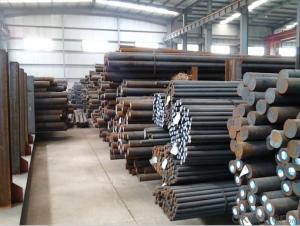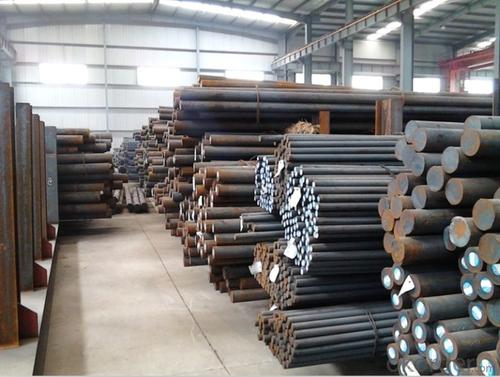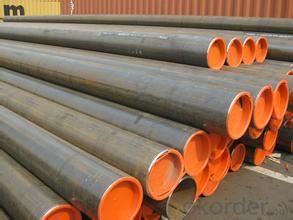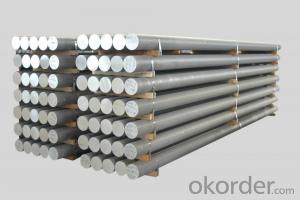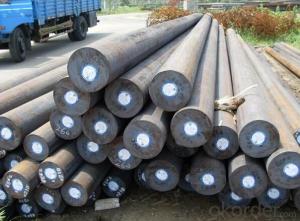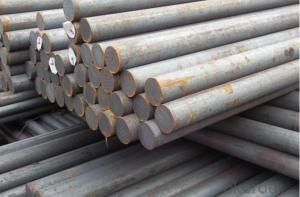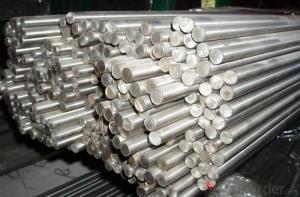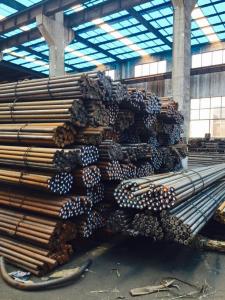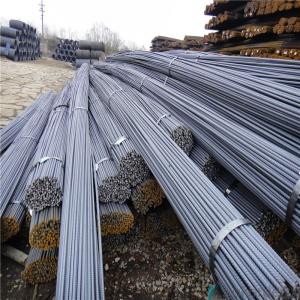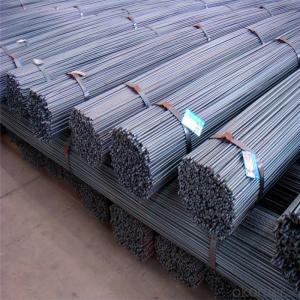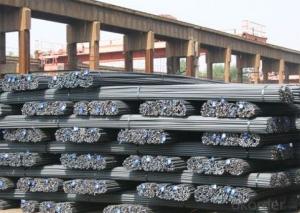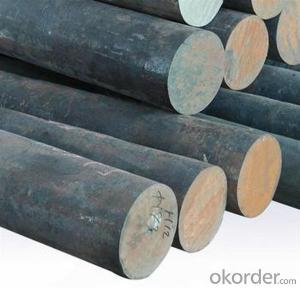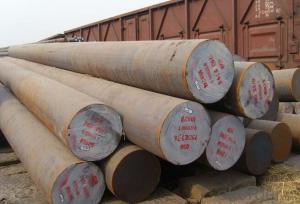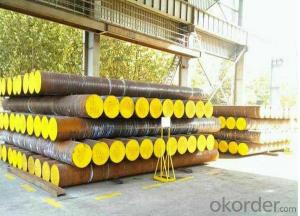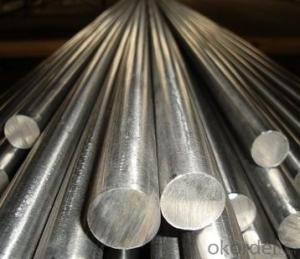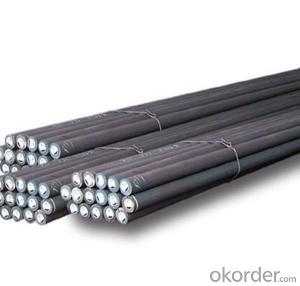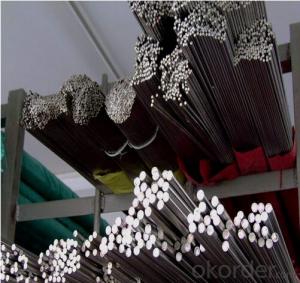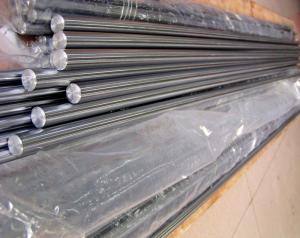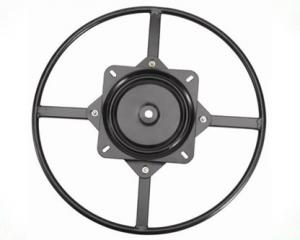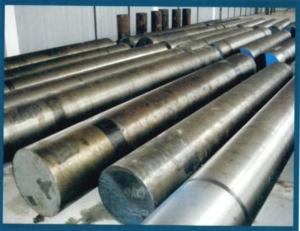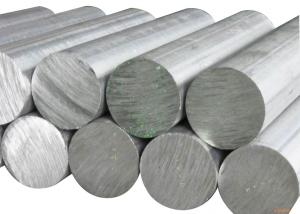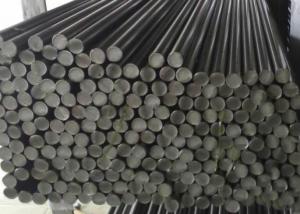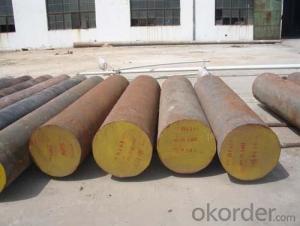Alloy Steel 4Cr13 Special Steel Carbon Steel
- Loading Port:
- China main port
- Payment Terms:
- TT OR LC
- Min Order Qty:
- 25 m.t.
- Supply Capability:
- 10000 m.t./month
OKorder Service Pledge
OKorder Financial Service
You Might Also Like
Specification
Chemical Composition(GB)%
C | Si | Mn | Cr | P | S |
0.4 | 0.5 | 0.7 | 13 | ≤0.030 | ≤0.030 |
Standard
GB | ASTM | DIN | JIS |
4Cr13 | 4.2 | 1.2083 | 420J2 |
Available Size
Rolled plate | 12-120mm*720mm*6000mm | ||
Module | 130-400mm*1000mm*6000mm | ||
Heat Treatment
Processing | Temperature ℃ | Hardness |
Anneal | 750-800 | ≤235HB |
Quenching | 1050-1100 | ≥50HRC |
Tempering | 200-300 | ≥50HRC |
Characterstics
1.High corrosion resistance and mirror performance
2.Higher strength and abrasion resistance
Applications:Suitable for precise dies with super mirror performance and abrasion resistance,camera components,optical lens
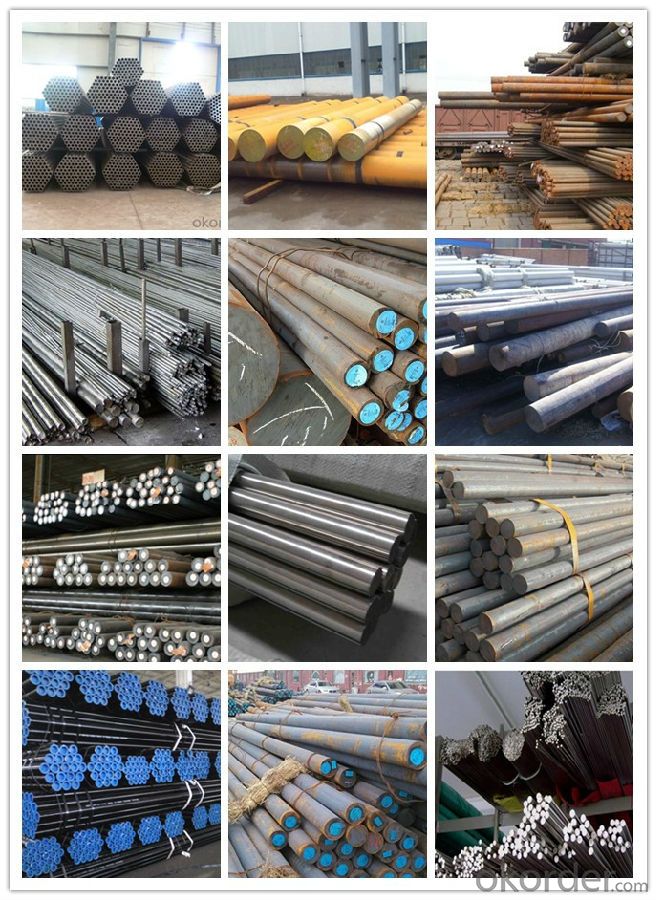
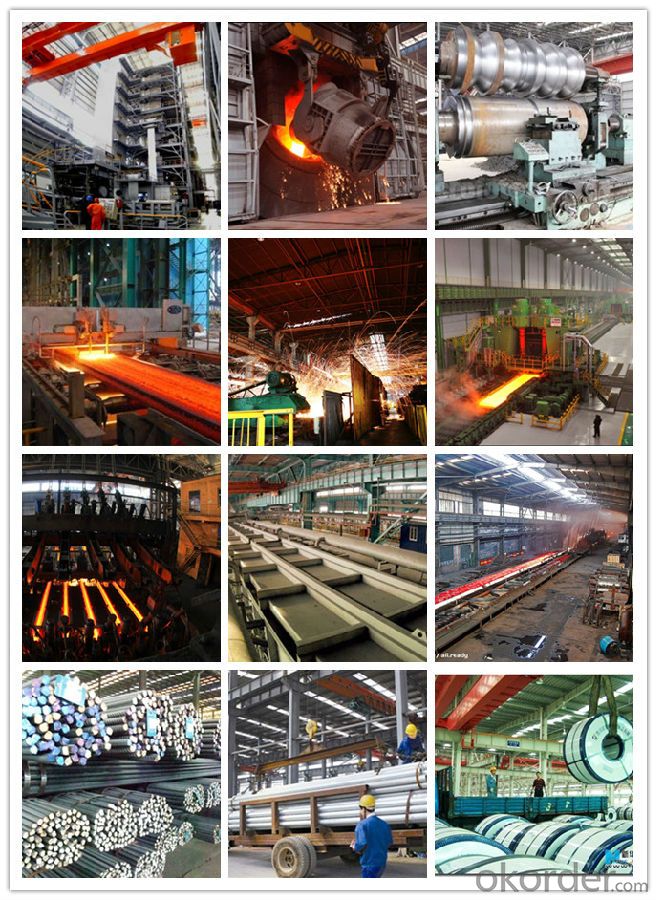
1, Your advantages?
professional products inquiry, products knowledge train (for agents), smooth goods delivery, excellent customer solution proposale
2, Test & Certificate?
SGS test is available, customer inspection before shipping is welcome, third party inspection is no problem
3, Payment Terms?
30% TT as deposit and 70% before delivery.
Irrevocable L/C at sight.
4, Trading Terms?
EXW, FOB, CIF, FFR, CNF
6, After-sale Service?
We provides the services and support you need for every step of our cooperation. We're the business partner you can trust.
For any problem, please kindly contact us at any your convenient time.
We'll reply you in our first priority within 24 hours.
- Q: What are the challenges in machining special steel?
- Machining special steel can present several challenges due to its unique properties. One of the main challenges is its high hardness, which requires specialized cutting tools and techniques to effectively shape the steel. Another challenge is the tendency of special steel to work harden, making it more difficult to machine as the process progresses. Additionally, special steel often contains alloying elements that can cause increased tool wear and heat generation during machining, necessitating careful selection of cutting parameters to maintain tool life and prevent thermal damage. Finally, the inherent toughness of special steel can also pose challenges in terms of chip formation and control, as well as potential tool breakage. Overall, machining special steel demands expertise, precision, and appropriate tooling to overcome these challenges and achieve desired results.
- Q: How does special steel perform in power generation applications?
- Special steel is highly valued in power generation applications due to its exceptional properties and performance. Power generation equipment such as gas turbines, steam turbines, and nuclear reactors operate under extreme conditions of high temperature, pressure, and corrosive environments. Special steel alloys, specifically designed to withstand these harsh conditions, offer several advantages in power generation applications. Firstly, special steel exhibits excellent heat resistance, making it ideal for power generation equipment that operates at high temperatures. This steel has a high melting point, enabling it to maintain its structural integrity and mechanical properties even at elevated temperatures. This is crucial for gas turbines and steam turbines, which generate power by converting thermal energy into mechanical energy. Secondly, special steel possesses superior strength and toughness, making it well-suited for power generation applications that require reliable and durable components. Power plants operate continuously, often for long periods, and are subject to significant mechanical stresses. Special steel can withstand these loads without deformation or failure, ensuring the safe and efficient operation of power generation equipment. Furthermore, special steel exhibits excellent resistance to corrosion and oxidation, which are prevalent in power generation environments. This steel is designed to resist the corrosive effects of high-temperature gases, steam, and water, ensuring the longevity of power generation equipment. Corrosion-resistant alloys of special steel are commonly used in power plants to prevent material degradation and maintain operational efficiency. In addition to its mechanical and corrosion-resistant properties, special steel also offers excellent weldability and machinability. This makes it easier to fabricate and assemble power generation equipment, reducing production time and costs. Overall, special steel is a reliable and high-performance material for power generation applications. Its exceptional heat resistance, strength, toughness, corrosion resistance, and weldability make it an ideal choice for gas turbines, steam turbines, and other power generation equipment. The use of special steel in power generation contributes to increased efficiency, reliability, and longevity of these critical systems.
- Q: What are the different surface finishing methods used for special steel?
- Special steel can be subjected to various surface finishing methods, each serving a distinct purpose and yielding different outcomes. The most commonly employed surface finishing techniques for special steel comprise: 1. Grinding: By utilizing abrasive materials, grinding eliminates excessive material from the steel's surface. This method is primarily employed to attain a polished and sleek finish, while also eradicating any imperfections or roughness. 2. Polishing: By utilizing abrasive materials and polishing compounds, polishing creates a smooth and lustrous surface on the steel. This technique is frequently utilized to enhance the steel's visual appeal and bolster its resistance against corrosion. 3. Shot blasting: Shot blasting involves propelling small metallic or mineral particles onto the steel's surface at high velocities. This process effectively eliminates any impurities, rust, or scale, resulting in a clean and uniform finish. 4. Electroplating: Electroplating involves depositing a thin layer of metal onto the steel's surface via an electrochemical reaction. Commonly employed to improve the steel's appearance, corrosion resistance, and provide a decorative or protective coating. 5. Passivation: Passivation, a chemical process, entails treating the steel's surface with an acid solution to eliminate impurities and create a passive layer that resists corrosion. This method is frequently employed to enhance the corrosion resistance of stainless steel and other alloys. 6. Coating: Coating refers to the application of a protective layer or coating onto the steel's surface. This can involve utilizing paints, lacquers, enamels, or other protective coatings to prevent corrosion, enhance durability, or achieve a specific aesthetic finish. It is crucial to note that the selection of a surface finishing method for special steel heavily depends on the desired outcome, ranging from aesthetics to corrosion resistance or functionality. Furthermore, the specific characteristics of the steel, including its composition, hardness, and intended application, significantly influence the most suitable surface finishing method.
- Q: What are the different surface treatment methods used for special steel?
- Some of the different surface treatment methods used for special steel include galvanizing, electroplating, powder coating, heat treatment, and nitriding. Galvanizing involves applying a protective zinc coating to prevent corrosion. Electroplating uses an electrical current to deposit a layer of metal onto the surface of the steel, improving its appearance and corrosion resistance. Powder coating involves spraying a dry powder onto the steel and then baking it to create a durable and attractive finish. Heat treatment involves subjecting the steel to high temperatures and then cooling it rapidly to alter its properties, such as hardness or toughness. Nitriding is a process of diffusing nitrogen into the surface of the steel to improve its hardness, wear resistance, and corrosion resistance. These surface treatment methods are used to enhance the performance, durability, and aesthetic appeal of special steel.
- Q: What are the different methods for improving the electrical conductivity of special steel?
- There are several methods for improving the electrical conductivity of special steel, including alloying, heat treatment, and surface modifications. Alloying involves adding elements like copper, nickel, or silver to the steel to enhance its conductivity. Heat treatment processes such as annealing or quenching can also improve conductivity by altering the microstructure of the steel. Additionally, surface modifications like electroplating or coating can be employed to enhance electrical conductivity.
- Q: How does the carbon content affect the properties of special steel?
- The properties of special steel are determined by the carbon content, playing a crucial role. Adding carbon to the steel modifies its microstructure and influences various mechanical and physical properties. The main impact of carbon content is on the steel's hardness and strength. Raising the carbon content in special steel leads to an increase in hardness. This occurs because carbon atoms occupy the interstitial sites in the iron lattice, causing a distortion in the crystal structure. Consequently, the steel becomes more resistant to deformation. Additionally, a higher carbon content results in a greater martensitic transformation during heat treatment, further enhancing the material's hardness. Moreover, the strength of special steel is significantly affected by the carbon content. Increased carbon levels lead to greater strength due to the formation of stronger and more abundant carbide precipitates. These carbides act as obstacles to the movement of dislocations, making it more challenging for the steel to deform under load. However, it is important to acknowledge that higher carbon content comes with certain trade-offs. As the carbon content increases, the steel's ductility decreases. This means that the material becomes less capable of deforming without fracturing. High carbon content can make the steel brittle, reducing its toughness and impact resistance. In addition to hardness and strength, carbon content impacts other properties of special steel. It affects the material's wear resistance, as higher carbon content leads to the formation of harder carbides that can withstand wear and abrasion. Carbon also influences the steel's machinability, with higher carbon content making the material more difficult to machine due to increased hardness. In conclusion, the carbon content significantly influences the properties of special steel. It affects hardness, strength, ductility, toughness, wear resistance, and machinability. Therefore, when determining the appropriate carbon content for special steel, careful consideration of desired properties and application requirements is necessary.
- Q: How does special steel contribute to the automotive safety?
- Special steel, such as high-strength steel, plays a crucial role in enhancing automotive safety. It is used in various components of vehicles, including the chassis, body structure, and safety systems, to provide superior strength and durability. This type of steel helps improve crashworthiness by absorbing and distributing impact energy, reducing the risk of passenger injury. Additionally, special steel helps optimize the weight-to-strength ratio of vehicles, allowing manufacturers to design lighter yet safer cars that offer improved fuel efficiency and handling.
- Q: What are the different renewable energy grades of special steel?
- There are several grades of special steel that are commonly used in the renewable energy industry. These grades are specifically designed to withstand the harsh conditions and requirements of renewable energy applications. One of the most common grades of special steel used in renewable energy is stainless steel. Stainless steel is known for its corrosion resistance properties, which make it ideal for offshore wind turbines or solar panel frames that are exposed to moisture and saltwater. It is also used in geothermal power plants, where high temperatures and corrosive environments are present. Another grade of special steel used in renewable energy is high-strength low-alloy (HSLA) steel. HSLA steel has a higher strength-to-weight ratio, making it suitable for applications that require lightweight structures with high strength, such as wind turbine towers or support structures for solar panels. Furthermore, there is advanced high-strength steel (AHSS) that is commonly used in the automotive industry but can also be utilized in renewable energy applications. AHSS offers excellent strength, durability, and impact resistance, making it suitable for components like blades or gears in wind turbines. Additionally, there is a grade of steel called weathering steel, which is often used in renewable energy applications that are exposed to outdoor elements. Weathering steel forms a protective layer of rust, which prevents further corrosion and eliminates the need for additional coatings. It is commonly used in solar panel support structures, transmission towers, or other outdoor equipment. Overall, the selection of the appropriate grade of special steel for a specific renewable energy application depends on factors such as the type of renewable energy source, the environment in which it will be installed, and the specific requirements of the project.
- Q: What are the main challenges in welding special steel?
- The main challenges in welding special steel include its high carbon content, which can lead to cracking and distortion during the welding process. Additionally, special steels often have higher alloy content, making them prone to heat-affected zone (HAZ) issues such as reduced strength and corrosion resistance. Controlling the heat input and using suitable welding techniques and filler materials are crucial for successfully welding special steel.
- Q: What are the future trends and innovations expected in special steel production?
- In the future, several trends and innovations are expected to shape the special steel production industry. Here are a few key areas where advancements are likely to occur: 1. Advanced Manufacturing Techniques: Special steel manufacturers are likely to adopt advanced manufacturing techniques such as additive manufacturing (3D printing) and digitalization. These technologies will facilitate the production of complex geometries, reduce waste, and enable customization of special steel products. 2. Sustainable Production: As environmental concerns continue to grow, there will be a focus on sustainable production methods in the special steel industry. This includes the adoption of energy-efficient processes, recycling and reusing materials, and minimizing the carbon footprint of steel production. 3. High-Strength and Lightweight Alloys: With the increasing demand for lightweight materials in various sectors like automotive and aerospace, special steel production is expected to focus on developing high-strength and lightweight alloys. These alloys will offer improved performance while reducing the weight of components, leading to fuel efficiency and enhanced sustainability. 4. Nanotechnology and Microstructural Engineering: Nanotechnology and microstructural engineering will play a significant role in enhancing the properties of special steels. By manipulating the material at the nanoscale, manufacturers can improve strength, toughness, corrosion resistance, and other characteristics. 5. Enhanced Surface Treatments: Advances in surface treatments, such as coatings, will contribute to the performance and longevity of special steel products. Innovative surface treatments will provide increased resistance to wear, corrosion, and heat, expanding the range of applications for special steels. 6. Digitalization and Data Analytics: The integration of digital technologies and data analytics will revolutionize special steel production. Smart factories with interconnected systems will enable real-time monitoring, predictive maintenance, and improved quality control, resulting in higher productivity and efficiency. 7. Automation and Robotics: Automation and robotics will continue to play a vital role in special steel production. Automated processes will optimize productivity, reduce human errors, and improve worker safety, thereby enhancing overall operational efficiency. 8. Industry 4.0 Integration: The special steel industry is expected to embrace Industry 4.0 principles, such as the Internet of Things (IoT) and artificial intelligence (AI). These technologies will enable seamless connectivity, intelligent decision-making, and predictive analysis, leading to improved productivity, cost-effectiveness, and competitiveness. Overall, the future of special steel production is likely to be driven by advancements in manufacturing techniques, sustainable practices, material engineering, digitalization, and automation. These innovations will not only enhance the performance and quality of special steel products but also contribute to a more sustainable and efficient industry.
Send your message to us
Alloy Steel 4Cr13 Special Steel Carbon Steel
- Loading Port:
- China main port
- Payment Terms:
- TT OR LC
- Min Order Qty:
- 25 m.t.
- Supply Capability:
- 10000 m.t./month
OKorder Service Pledge
OKorder Financial Service
Similar products
Hot products
Hot Searches
Related keywords
